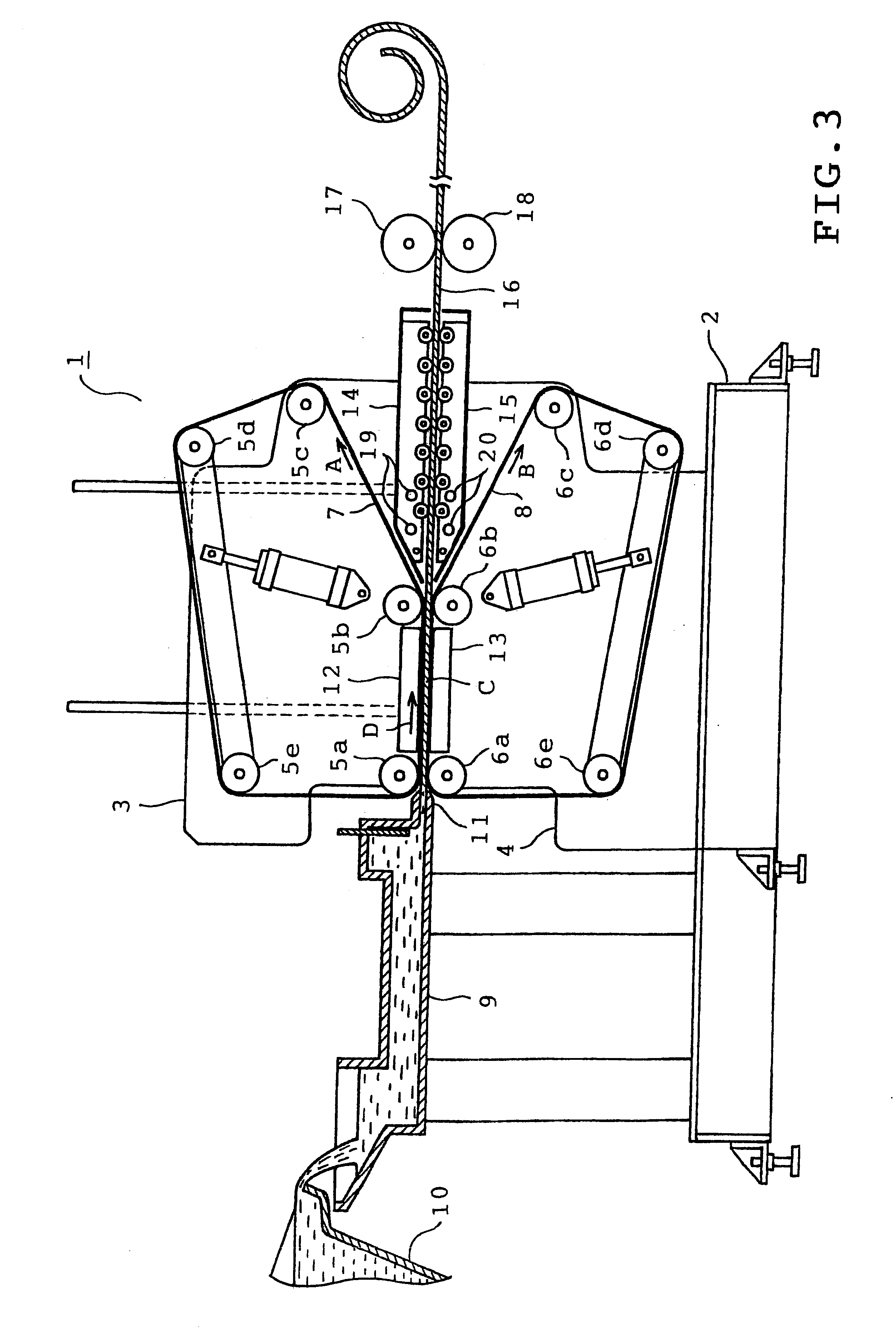Method of making aluminum alloy plate for bearing
- Summary
- Abstract
- Description
- Claims
- Application Information
AI Technical Summary
Benefits of technology
Problems solved by technology
Method used
Image
Examples
Embodiment Construction
One embodiment of the present invention will be described with reference to the accompanying drawings. Referring first to FIG. 3, a belt casting machine 1 is shown which casts an aluminum bearing alloy into the shape of a plate. The belt casting machine 1 comprises a base 2 and a pair of upper and lower machine frames 3 and 4. A plurality of rollers 5a to 5e and 6a to 6e are mounted on the frames 3 and 4 respectively. A pair of endless belts 7 and 8 are passed through the rollers 5a-5e and 6a-6e respectively. Each endless belt is made of a steel plate or heat-resistant fiber.
The rollers 5a-5e and 6a-6e are coupled to respective electric motors (not shown). Upon drive of the motors, the belts 7 and 8 are driven so as to travel in the directions of arrows A and B respectively. A part of the upper endless belt 7 between the rollers 5a and 5b is substantially parallel to a part of the lower endless belt 8 between the rollers 6a and 6b. A space where the belts 7 and 8 are parallel to eac...
PUM
| Property | Measurement | Unit |
|---|---|---|
| Fraction | aaaaa | aaaaa |
| Fraction | aaaaa | aaaaa |
| Fraction | aaaaa | aaaaa |
Abstract
Description
Claims
Application Information
 Login to View More
Login to View More - R&D
- Intellectual Property
- Life Sciences
- Materials
- Tech Scout
- Unparalleled Data Quality
- Higher Quality Content
- 60% Fewer Hallucinations
Browse by: Latest US Patents, China's latest patents, Technical Efficacy Thesaurus, Application Domain, Technology Topic, Popular Technical Reports.
© 2025 PatSnap. All rights reserved.Legal|Privacy policy|Modern Slavery Act Transparency Statement|Sitemap|About US| Contact US: help@patsnap.com



